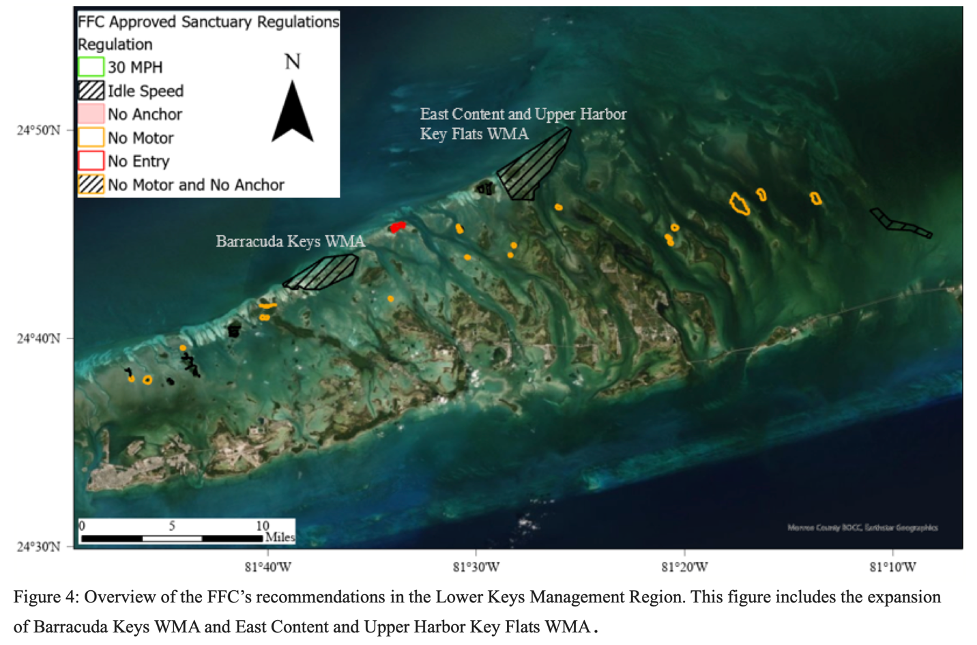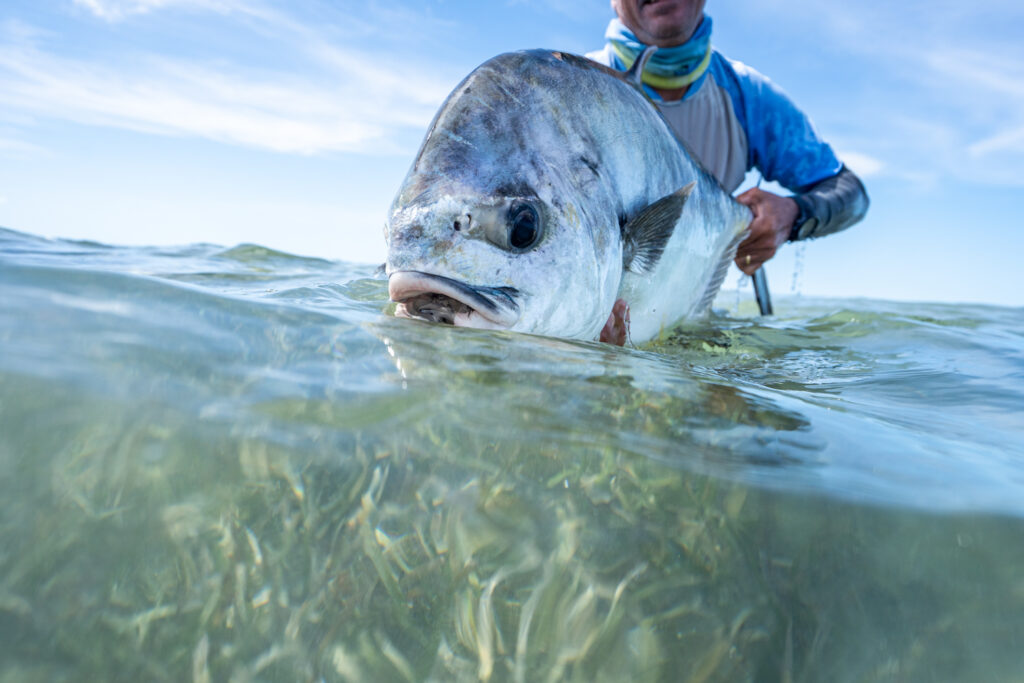A permit tagged in the Lower Keys for Project Permit. Photo: Ian Wilson
BTT is working in close collaboration with the Florida Keys Fishing Guides Association (FKFGA) and the Lower Keys Guides Association (LKGA) to support a set of science-based recommendations for the Florida Keys National Marine Sanctuary (FKNMS) Restoration Blueprint. The coalition’s recommendations underscore the critical importance of habitat, water quality and enforcement—all to ensure that our shallow water habitats are adequately protected while also providing for responsible access. In total, these recommendations would increase seagrass and hard bottom protections in the Lower Keys by 1427 and 127 acres respectively.
For Wildlife Management Areas (WMAs) that the coalition supports as proposed by the FKNMS, the coalition’s overall recommendation is for responsible access that provides enhanced habitat protection. For WMAs, the coalition recommends that the “no entry” zoning proposed by the FKNMS be adjusted to 300’ as “no motor” zones, with 50’ “no entry” buffers that allow casting into them unless science suggests they are active bird colonies or nesting areas.
Lower Keys Management Area
The coalition’s recommendations for the Lower Keys are presented on this map and would protect essential permit habitats through marine zoning and reduce the impact of increasing marine use on the flats fishery. The recommendations include:
- Support for the FKNMS Restoration Blueprint Bay Keys WMA, East Bahia Honda Key WMA, Northeast Tarpon Belly Keys WMA, Sawyer Key WMA, West Bahia Honda Key WMA, Cayo Agua Keys WMA, and Mud Keys WMA
- Modification of Easy Harbor Key WMA, Happy Jack Key WMA, Horseshoe Keys WMA, Howe Keys WMA, Little Pine Key Mangrove WMA, Snipe Keys WMA, Torch Keys WMA, and Water Key Mangroves WMA to be re-zoned as no motor zones.
- Modification of the Crane Key WMA be to an idle speed zone on the western side and a no motor zone on the remaining portion of the zone
- Expansion and modification of Barracuda Keys WMA and East Content and Upper Harbor Key to protect bonefish habitat, and tarpon from vessels traveling on plane
Recommendations for new zones or the expansion of FKNMS Restoration Blueprint zones are labeled on the map. To learn more, Click Here to read BTT’s comments on the FKNMS Restoration Blueprint. Click Here to read BTT, FKFGA, and LKGA’s Summary of Recommendations for FKNMS.





